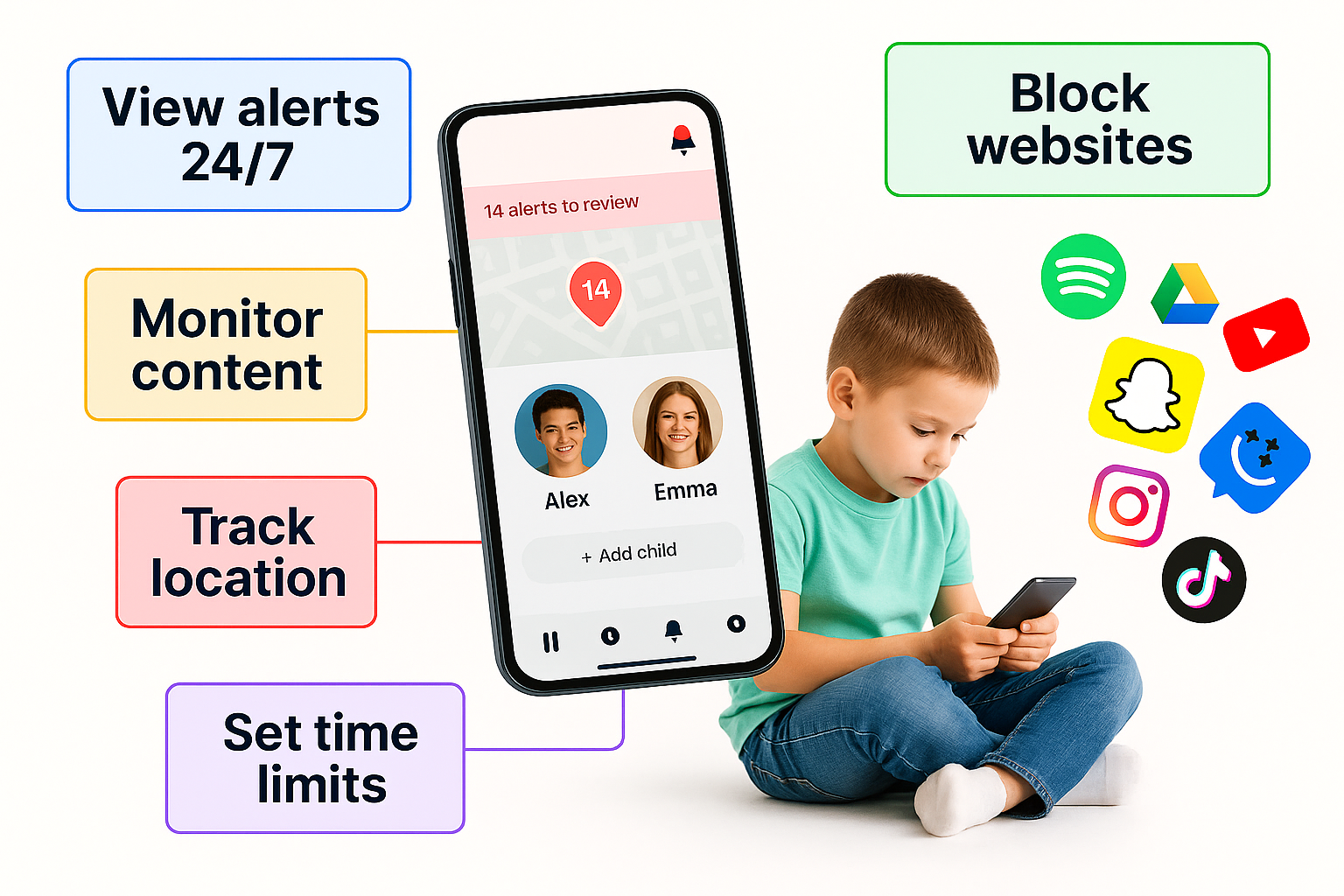Screen Time by the Numbers: What the Latest Research Means for Your Child’s Phone
We’ve heard the warnings: more screens, less sleep; more phone use, more anxiety. But what do the numbers really show? And how can we use those numbers to make better decisions when giving our kids a smartphone?
This article explores the latest screen time trends and helps you connect the dots between the data, your parenting choices, and the kind of device your child carries every day.
1. How Much Screen Time Are Kids Really Getting?
On average, school-aged children are spending between 2 to 6 hours per day on screens. For many families, that number climbs even higher on weekends or holidays.
Some key trends:
- Kids between 8 and 12 often use screens more than 4 hours per day.
- Many preteens now receive their first smartphone before age 11.
- Children with phones are more likely to use devices late into the night.
This usage isn’t just about time—it’s about how that time affects their emotions, learning, and relationships.
2. The Smartphone Multiplier Effect
Giving a child a smartphone adds a layer of constant availability. Unlike TV or laptops, smartphones are:
- Portable – always within arm’s reach
- Interactive – full of notifications, messages, and games
- Private – often used in bedrooms or away from adults
That means screen time is harder to monitor—and much easier to exceed.
Smartphones amplify both the benefits and risks of digital access. A child-safe phone with limits, app filters, and downtime features helps control the flow.
3. Screen Time vs. Screen Quality
Not all screen time is created equal. One hour on a reading app isn’t the same as one hour on endless video scrolls.
Break screen use into categories:
- Educational/Creative: Learning apps, drawing tools, coding games
- Communication: Calling or texting family and approved friends
- Passive Entertainment: Streaming, YouTube, games
- Unmonitored Browsing: Open internet, social platforms
The more we move toward intentional, high-quality use, the less harmful screen time becomes. That starts with the type of phone and apps you approve.
4. Why Some Kids Struggle More Than Others
Some children naturally manage screen time better. Others may:
- Have trouble stopping when time is up
- Get emotionally attached to certain apps or games
- Stay up late secretly using devices
- Feel anxious or irritable when phones are removed
These are signs that the phone is managing the child—not the other way around.
Using phones with built-in limits helps shift that control back to the parent—without needing constant arguments or surveillance.
5. Turning Data Into Decisions: 5 Steps
Know your starting point
Track screen time across all devices for one week. Notice patterns: When are the longest sessions? What’s being used? How is your child feeling after?
Set realistic, age-appropriate limits
Younger children (ages 7–11) typically do well with 1 to 1.5 hours of total screen time per day, including smartphone use. Focus on communication and light entertainment—not full social media or unlimited games.
Choose the right device
A phone made for kids—with:
- App limits
- Bedtime mode
- Content filters
- Contact approval
is more effective than giving a full smartphone with manual supervision.
Build in phone-free zones
Designate device-free times like dinner, one hour before bed, and during family activities. Set the example by following the same rules yourself.
Check in weekly
Ask your child: “What’s one thing that felt good about your phone use this week? What felt off?”
Create space for open dialogue. Let them help adjust the rules as they grow.
6. What Happens When Screen Time Goes Unchecked
Without structure, many families see:
- Sleep struggles due to late-night scrolling
- Less face-to-face interaction
- Increased anxiety and mood swings
- Resistance or meltdowns when the phone is taken away
None of this happens overnight—but little habits become strong patterns quickly.
Early habits with a child’s first phone matter. Set them now, while your child is still learning to self-regulate.
7. From Risk to Resilience: Making Screens Work for Your Family
The solution isn’t to ban screens. It’s to help your child learn healthy habits while you still have influence.
Using a kid-safe phone helps you:
- Avoid unwanted app downloads
- Prevent exposure to harmful content
- Stay in control of screen time—even remotely
- Build digital trust through tools instead of constant arguments
When screens are structured well, they stop feeling like the enemy. They become one part of a balanced, creative, and safe life.
Screen time is part of modern childhood. But how much, when, and what kind all matter. With the right data, tools, and device, you can guide your child into a smarter, safer, and more meaningful digital future.
Let their first phone be one that teaches—not just entertains.

